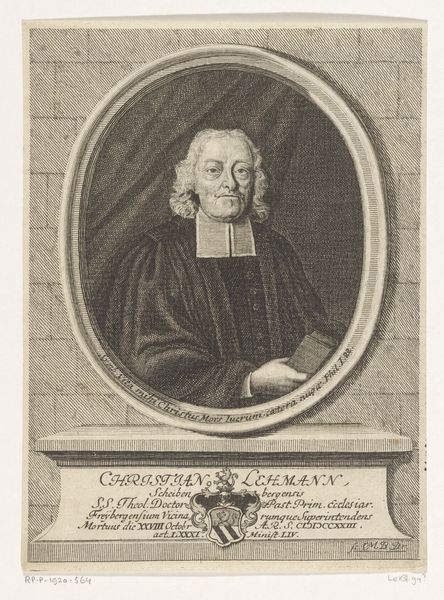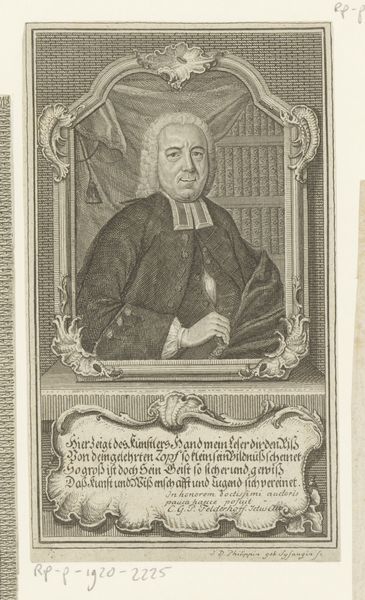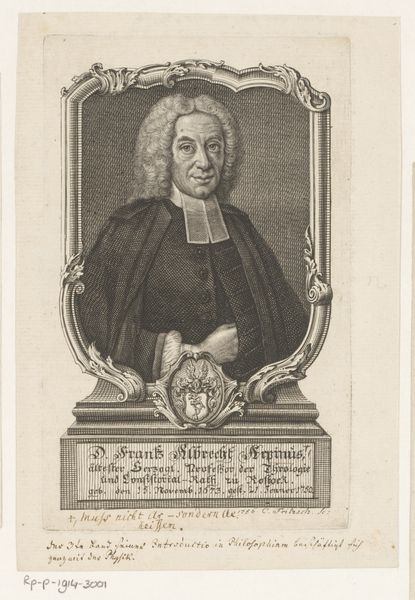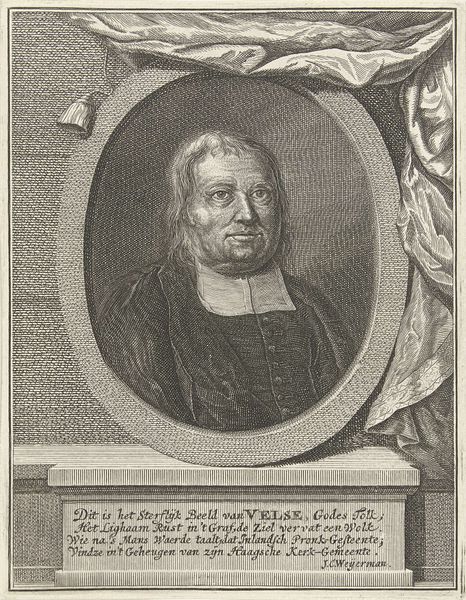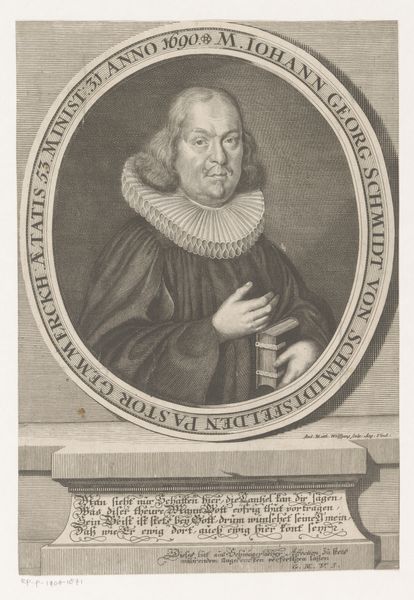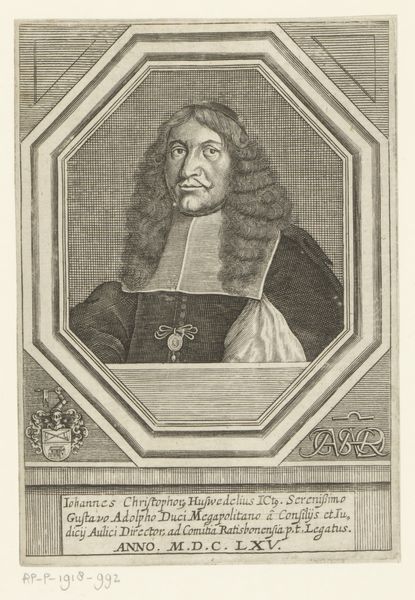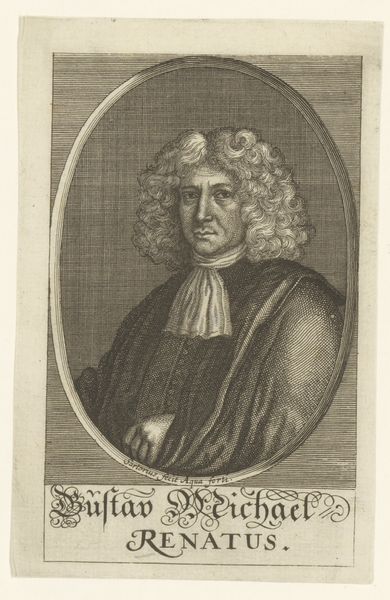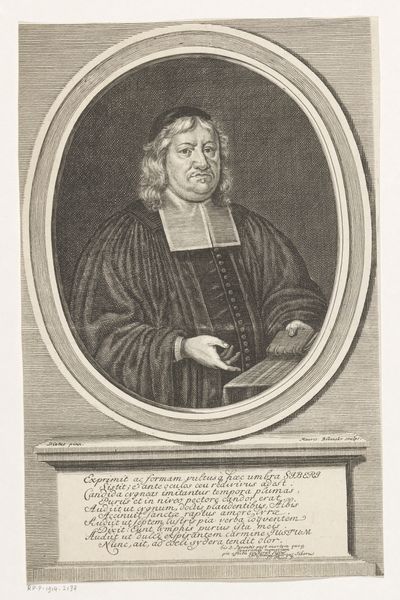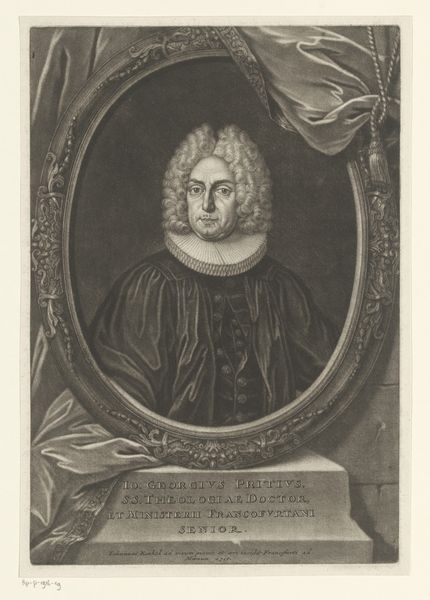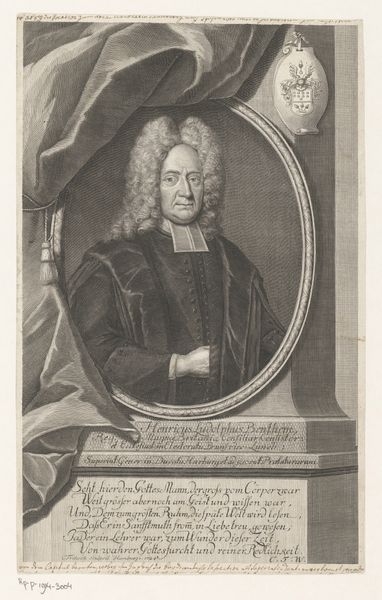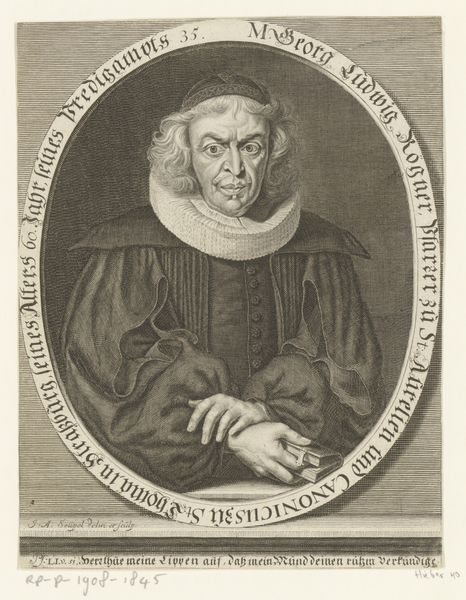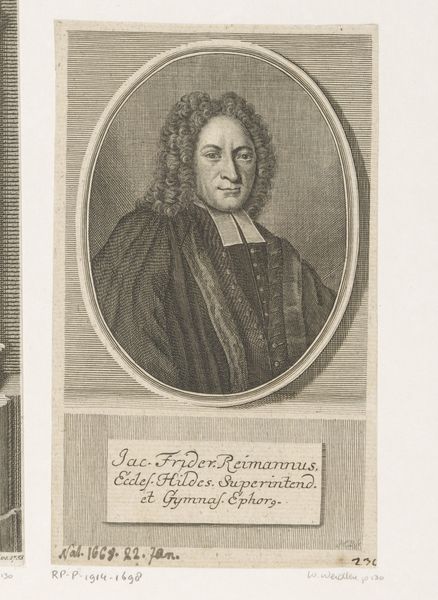
print, engraving
#
portrait
#
baroque
# print
#
old engraving style
#
historical photography
#
history-painting
#
engraving
Dimensions: height 145 mm, width 85 mm
Copyright: Rijks Museum: Open Domain
Editor: Here we have Johann Georg Mentzel's print, "Portret van Andreas Adam Hochstetter," created sometime between 1687 and 1743. It's an engraving and possesses such formality and intricate detail; it’s quite striking. How do you read the visual language here? Curator: Well, observing the formal elements first, we can note the strategic use of line to create textures and patterns that articulate form. See how the parallel lines and cross-hatching define the subject's garments, drapery, and even the background shelves of books, creating visual depth. Editor: I do see that now. It’s all in the precision and direction of the lines, creating value and volume. Curator: Precisely. The composition, rigidly symmetrical, frames the subject with these textures. What impact does this order have on your interpretation? Editor: It reinforces the sitter's importance, creating a structured and almost stately feel. Would you say the sharp details in the face play a crucial part in delivering this feeling? Curator: Yes, Mentzel’s skilled engraving gives Hochstetter a certain presence and the background is a symbolic anchor – the books, drapery – they ground him in learning and status. This is meticulously constructed meaning using form itself. What have you taken away from this analysis? Editor: I'm gaining an appreciation for how much meaning and context can be communicated through the formal choices an artist makes in what might seem like a simple portrait. Curator: Exactly! Analyzing form isn't merely describing what we see; it's about deciphering *how* that form communicates and shapes our understanding.
Comments
No comments
Be the first to comment and join the conversation on the ultimate creative platform.
